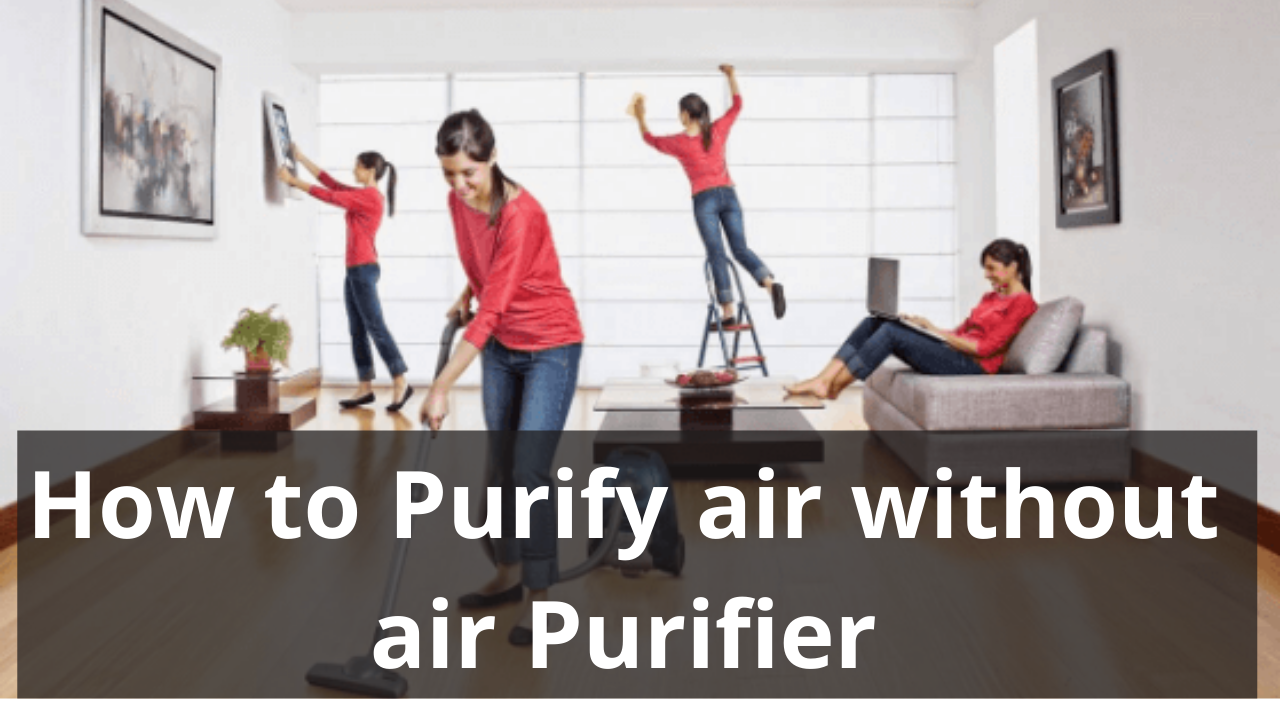According to research, the air we breathe in is around 2 to 5 times more polluted with contaminated content that can cause allergies or irritants. No wonder an air purifier is what almost all of us have but how to purify air without air purifier could be costlier if the air quality in your area is below average. So, you must have some potential alternatives to get rid of or at least minimize air pollution.
Here we have some listed below.
How to purify the air without air purifier?
Some handy and easiest way to purify the air is by relying on natural means. However, it depends on personal preference, still, we are sharing the possible options
1. Add more greenery inside and outside your house

Adding plants to your house is beneficial as there are several varieties of houseplants that remove typical volatile organic pollutants air.
According to research released by the American Society for Horticultural Science, having indoor houseplants can improve indoor air quality. You have more oxygen
Spider plants are efficient at reducing benzene, formaldehyde, carbon monoxide, and nitrogen dioxide.
Keep a house plant on every 100 sq. ft to get more clean and healthier air.
2. Essential Oils Diffuser in your living rooms

Adding some essential oils, such as rosemary, and tea tree oil, have antibacterial qualities and may be used to make DIY household cleaners or applied directly to your skin to cure a minor cut.
However, probably you are unaware of the fact that these oils can also help to decrease airborne bacteria such as mold, fungus, airborne viruses, etc.
Essential oils such as eucalyptus, clove, lavender, rosemary, thyme, grapefruit, eucalyptus, etc. have been shown to lower the number of dust mites in your home and kill the bacteria by around 99.96 %. This is almost around the performance of a HEPA filter that eliminates 99.97% microns.
3. Adding Beeswax Candles
It does sound bizarre that adding beeswax candles in your home can minimize the pollutants but it is scientifically proven. For the right amount of oxygen, our bodies require operating correctly—the air we breathe contains additional gases as well as a mixture of different compounds and microscopic particles.
As we said earlier that some plants aid in the removal of these hazardous polluting substances, there are certain plants ions can bind to potentially hazardous particles in the air and neutralize them.
Similarly, pure beeswax candles are more likely to help to neutralize harmful pollutants and purify the interior air.
Moreover, any type of candle emits soot into the atmosphere, so it remains always in the debate whether or not should I go for it.
However, the ions released by the beeswax candle neutralize toxic compounds from the air and also adds aesthetics to your house.
4. Ensure the cleanliness of your pets

Pet dander and the skin cells of your dogs, cats, or any other pet that you own is likely to be found almost wherever a pet resides in your home.
Dander, much more than pet fur, might cause you to develop asthma-like symptoms or aggravate your asthma if you already have it.
If you have a pet, be sure to keep dander to a minimum by washing them regularly, brushing them outside if possible, and vacuuming floors and furniture with a HEPA filter regularly. Or, you can only restrict them to a room to lessen the pollution.
5. Using Non-Toxic Chemicals

You might not know but the cleansers that you are using for house cleaning are also harmful. Many store-bought household cleansers include hazardous chemicals that can irritate the eyes, nose, throat, and lungs.
If you’re going to utilize these, at the very least leave some windows open. However, for a more environmentally friendly choice, consider creating your household cleaners using materials such as vinegar, baking soda, citrus juice, or essential oils.
6. Removing Molds
These fungi can release spores into the air, which can cause allergy symptoms.
It thrives in dark, damp environments such as your bathroom, laundry room, and basement. However, you do not need to bleach it away.
7. Salt Lamps
Another excellent natural air purifier is a salt lamp. “Salt crystal products tend to decrease airborne irritants, germs, and allergies by drawing water vapor out of the air. Himalayan pink salt is a natural ionic air purifier that attracts and neutralizes pollutants in the atmosphere.
Apart from that, there is another perception that there are chances that an air purifier could be harmful. To some extent it is true, but it is not necessary in every case.
How air purifiers can be harmful and aggravate health conditions?
Air purifiers are designed to remove dust, pollen, airborne particles, and volatile organic compounds generated by a variety of goods, including paint, cleaning supplies, and pesticides. These contaminants are thought to exacerbate respiratory and other health issues.
However, indoor air purifiers are marketed as safe home devices for health-conscious people, particularly those suffering from allergies and asthma, yet some purifiers emit ozone while in use.
Some air purifiers produce ozone as a consequence of ionization when they charge airborne particles and electrostatically draw them to metal electrodes.
The ionic purifiers generate a few milligrams of ozone every hour, which is about equivalent to the quantity emitted by a dry-process photocopier during continuous operation, depending on the design.
What hazards can it cause? How to purify air without air purifier
Ozone can cause lung damage, resulting in chest discomfort, coughing, shortness of breath, and throat irritation. It can also aggravate chronic respiratory illnesses like asthma and impair the body’s capacity to fight respiratory infections – even in healthy people.
Along with that, you can also experience eye infections and other skin allergies. However, it does not mean that you should not go for an air purifier but, try to avoid the purifier that produces an access amount of Ozone.
